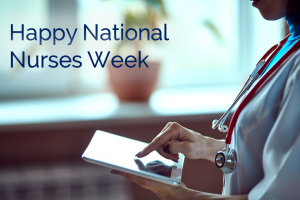Two weeks ago, it was National Nurses Week. This week is Health Technology Management (HTM) Week. If you work in a hospital, you may still refer to HTM as Clinical Engineering, Biomedical  Engineering, or just Biomed. Regardless of what you know this department as, they are some of the unsung heroes in every hospital.
Engineering, or just Biomed. Regardless of what you know this department as, they are some of the unsung heroes in every hospital.
The nurses and physicians know these heroes well. The C-suite is recognizing their value more all the time. And IT departments are learning to work collaboratively with them as systems become more integrated.
These are the staff who design, install, maintain and repair the medical devices that connect to patients. Just think about a patient in an intensive care unit surrounded by all that equipment and all those connecting tubes and wires. If those of us in IT think we’re important and critical to the hospital, HTM staff are life critical to the patients.
As a CIO, I’ve always told my IT teams that we are part of the extended care team to emphasize the importance of our providing 24/7 support and excellent customer service. While we don’t touch the patient, the clinicians who do depend on the systems we provide and support. This is even more true for HTM staff.
AAMI (Association for the Advancement of Medical Instrumentation) is a standards development organization and the professional society for HTMs. AAMI celebrated its 50th anniversary last year. Its mission is to advance safety in healthcare technology.
While healthcare organizations recognized their HTM staff in various ways this week, June 1-4 will be a chance for HTM professionals to come together for education and networking at the annual AAMI conference in Long Beach. Continue reading



